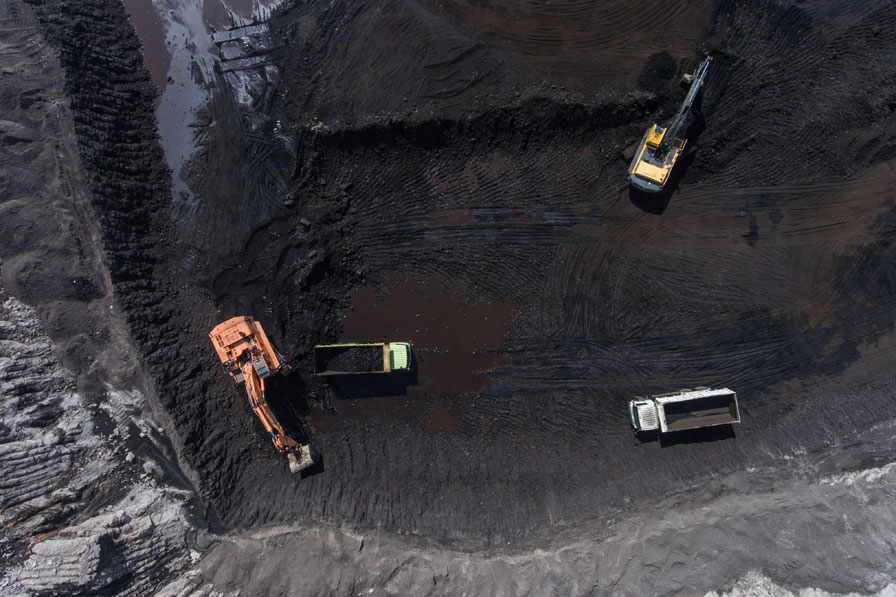We can decarbonise industry and transport

With hydrogen, we are providing a relevant solution to achieve the goal of reducing CO2 emissions in the industrial and transport sectors. By 2030, France will invest €7 billion as part of its national strategy for developing decarbonised hydrogen.
Now more than ever, Hydrogen has a significant role to play in the debate on energies of the future. In September 2020, France presented its national strategy for the development of decarbonised hydrogen. Of the €100 billion in the government stimulus plan (including 30 million that is earmarked for the ecological transition), €2 billion is allocated to developing decarbonised hydrogen from 2021-2022. The ambition is clear: to make France the champion of decarbonised hydrogen.
Hydrogen is becoming more powerfl in France…
Although hydrogen is already used in many sectors (refining, chemicals, etc.), it is still primarily derived from fossil fuels (oil, coal, natural gas). It therefore emits significant quantities of greenhouse gases (9 million tonnes of CO2 per year)1.
Various French gas infrastructure operators have confirmed that it will be possible to integrate a significant volume of hydrogen into the gas mix by 2050 with limited infrastructure adaptation costs. They will be able to incorporate low-carbon and renewable hydrogen, via the recovery of hydrogen co-produced in the industry, resulting from the pyrogasification of waste or biomass, gas reforming through carbon storage or Power-to-Gas. In the short term, a 6% hydrogen blend can be integrated in most networks. A target capacity for integrating mixed hydrogen into the networks could be set at 10% by 2030, then 20% beyond that2. For operators, these promising prospects must rely on 3 major solutions: the hydrogen/other renewable gas mixture, anaerobic digestion3 and the roll out of 100% hydrogen infrastructures by converting existing gas structures or creating new networks.
… and it’s also gaining ground in Europe
The European Union presented its hydrogen strategy in the summer of 2020 as part of its stimulus plan. It launched a European alliance for clean hydrogen, bringing together stakeholders across the value chain, in order to expand investment projects aimed at increasing production. After this European strategy was presented, several gas infrastructure companies, operating in 9 Member States, proposed their vision. According to them, the gradual emergence of a hydrogen network would be possible by the middle of the next decade. By 2030, it could reach 6,800 km connecting the different European hydrogen valleys.
By 2040, a network of 23,000 km is planned. This European “hydrogen backbone” would consist of 75% of the existing pipes that have been converted from natural gas supplemented by an additional 25% of new hydrogen pipes. Two parallel complementary gas transmission networks would therefore coexist: one for hydrogen and the second for (bio)methane. This backbone would make it possible to transport hydrogen over long distances at lower costs and therefore optimise the overall development cost to produce low-carbon, renewable hydrogen where it will be inexpensive to do so and transport it back to the major consumption centres.
Sectors with high CO2 emissions are being targeted
Hydrogen offers a strategic opportunity to accelerate the decarbonisation of sectors with high CO2 emissions. This obviously includes industry. The use of hydrogen will therefore contribute to achieving the goals set as part of the low-carbon strategy for industry; To reduce annual emissions to 53 million tonnes by 2030 compared with the 80 million tonnes that are being emitted today4.
Heavy modes of transport are also being targeted: dump trucks and freight trucks, coaches, buses, trains, boats… and even aeroplanes! “By 2035, we must have succeeded in creating a carbon neutral aircraft and hydrogen is definitely the most promising option. It responds to the need for high-power engines or for long-haul capabilities, particularly for captive fleets travelling long distances on tight schedules”, the government said.
The large-scale use of low-carbon hydrogen will also reduce France’s dependence on fossil fuels by replacing them in industrial production processes. Among the sectors that are impacted are the chemical or refining industries and, to a lesser extent, the electronics or agri-food industries.
Hydrogen offers solutions to move towards cleaner industry and mobility. Against the backdrop of recovery in the country, it also offers great opportunities to develop a pool of jobs (between 50,000 and 150,000 direct and indirect jobs5). The emergence of a French electrolysis sector (Power-to-Gas) is a particularly key issue in achieving these environmental and economic goals.
1 Stratégie nationale pour le développement de l’hydrogène décarboné en France, ministère de la Transition écologique, dossier de presse, 8 septembre 2020.
2 GRTgaz
3 Procédé industriel consistant à faire réagir du dioxyde de carbone ou du monoxyde de carbone avec de l’hydrogène afin de produire du méthane.
4 Stratégie nationale pour le développement de l’hydrogène décarboné en France, ministère de la Transition écologique, dossier de presse, 8 septembre 2020.
5 The Conversation, 9 septembre 2020

